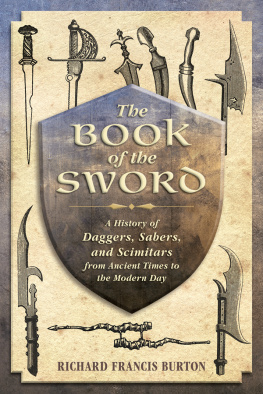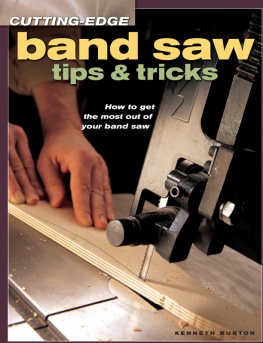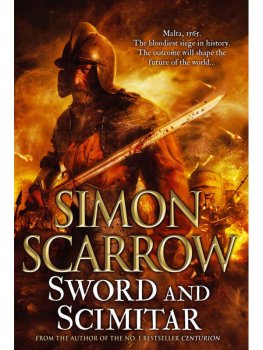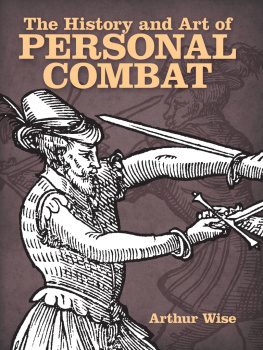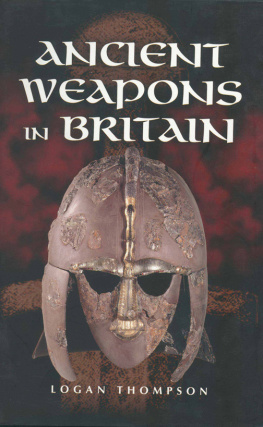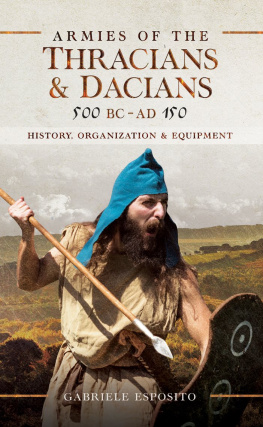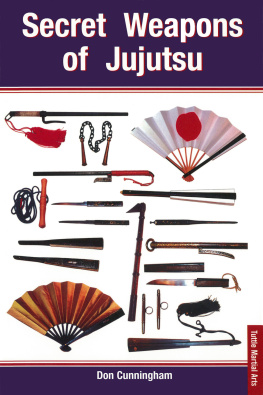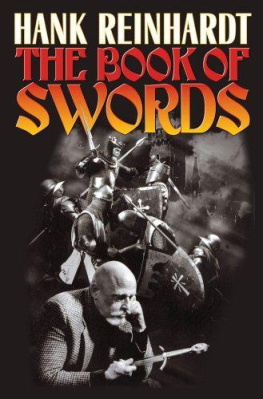Burton - The Book of the Sword: With 293 Illustrations
Here you can read online Burton - The Book of the Sword: With 293 Illustrations full text of the book (entire story) in english for free. Download pdf and epub, get meaning, cover and reviews about this ebook. City: United States, year: 2012, publisher: Dover Publications, genre: Romance novel. Description of the work, (preface) as well as reviews are available. Best literature library LitArk.com created for fans of good reading and offers a wide selection of genres:
Romance novel
Science fiction
Adventure
Detective
Science
History
Home and family
Prose
Art
Politics
Computer
Non-fiction
Religion
Business
Children
Humor
Choose a favorite category and find really read worthwhile books. Enjoy immersion in the world of imagination, feel the emotions of the characters or learn something new for yourself, make an fascinating discovery.
- Book:The Book of the Sword: With 293 Illustrations
- Author:
- Publisher:Dover Publications
- Genre:
- Year:2012
- City:United States
- Rating:3 / 5
- Favourites:Add to favourites
- Your mark:
- 60
- 1
- 2
- 3
- 4
- 5
The Book of the Sword: With 293 Illustrations: summary, description and annotation
We offer to read an annotation, description, summary or preface (depends on what the author of the book "The Book of the Sword: With 293 Illustrations" wrote himself). If you haven't found the necessary information about the book — write in the comments, we will try to find it.
The Book of the Sword: With 293 Illustrations — read online for free the complete book (whole text) full work
Below is the text of the book, divided by pages. System saving the place of the last page read, allows you to conveniently read the book "The Book of the Sword: With 293 Illustrations" online for free, without having to search again every time where you left off. Put a bookmark, and you can go to the page where you finished reading at any time.
Font size:
Interval:
Bookmark:
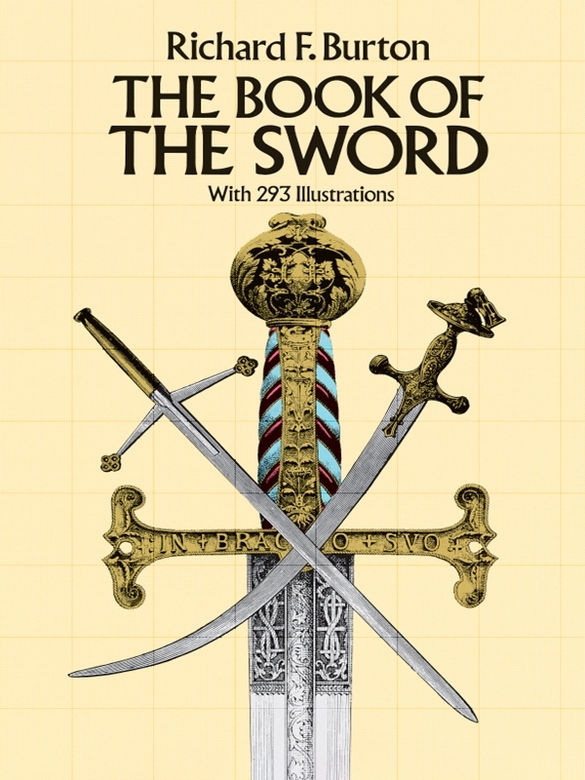
MANS civilisation began with Firehow to light it and how to keep it lit. Before he had taken this step, our primal ancestor (or ancestors) evidently led the life of the lower animals. The legend of Iapetus bold son Prometheus, like many others invented by the Greeks, or rather borrowed from Egypt, contained under the form of fable a deep Truth, a fact, a lesson valuable even in these days. Forethought, the elder brother of Afterthought, brought down the semina flamm in a hollow tube from Heaven, or stole it from the chariot of the Sun. Here we have the personification of the Great Unknown, who, finding a cane-brake or a jungle tree fired by lightning or flamed by wind-friction, conceived the idea of feeding the  with fuel. Thus Hermes or Mercury was Pteropdilos or Alipes ; and his ankles were fitted with Pedila or Talaria, winged sandals, to show that the soldier fights with his legs as well as with his arms.
with fuel. Thus Hermes or Mercury was Pteropdilos or Alipes ; and his ankles were fitted with Pedila or Talaria, winged sandals, to show that the soldier fights with his legs as well as with his arms.
I will not enlarge upon the imperious interest of Hoplology : the history of arms and armour, their connection and their transitions, plays the most important part in the annals of the world.
The first effort of human technology was probably weapon-making. History and travel tell us of no race so rude as to lack artificial means of offence and defence. not of the Cabbalist, but of the anthropologist, as soon as he raised himself above the beasts of the field by superiority of brains and hands.
The lower animals are born armed, but not weaponed. The arm, indeed, is rather bestial than human : the weapon is, speaking generally, human, not bestial. Naturalists have doubted, and still doubt, whether in the so-called natural state the lower animals use weapons properly so termed. Colonel A. Lane Fox, a diligent student of primitive warfare, and a distinguished anthropologist,
I never witnessed this bombardment by monkeys. But when my regiment was stationed at Baroda in Gujarat, several of my brother officers and myself saw an elephant use a weapon. The intelligent animal, which the natives call Hthi (the handed), was chained to a post during the dangerous season of the wet forehead, and was swaying itself in ill-temper from side to side. Probably offended by the sudden appearance of white faces, it seized with its trunk a heavy billet, and threw it at our heads with a force and a good will that proved the worst intention.
According to Captain Hallwho, however, derived the tale from the Eskimos, and will drive a man from one side of a quarter-deck to the other.
But though Mans first work was to weapon himself, we must not believe with the Cynics and the Humanitarians that his late appearance in creation, or rather on the stage of life, initiated an unvarying and monotonous course of destructiveness. The great tertiary mammals which preceded him, the hoplotherium, the deinotherium, and other -theria, made earth a vast scene of bloodshed to which his feeble powers could add only a few poor horrors. And even in our day the predatory fishes, that have learned absolutely nothing from mans inhumanity to man, habitually display as much ferocity as ever disgraced savage human nature.
Primitive manthe post-tertiary animalwas doomed by the very conditions of his being and his media to a life of warfare; a course of offence to obtain his food, and of defence to retain his life. Ulysses says pathetically :
No thing frailer of force than Man earth breedeth and feedeth;
Man ever feeblest of all on th Earths face creeping and crawling.
The same sentiment occurs in the Iliad; and Pliny, the pessimist, writesthe only tearful animal, Man.
The career of these wretches, who had neither minds nor souls, was one long campaign against ravenous beasts and their brother man-brutes. Peace was never anything to them but a fitful interval of repose. The golden age of the poets was a dream ; as Videlou remarked, Peace means death for all barbarian races. The existence of our earliest ancestors was literally the Battle of Life. Then, as now, the Great Gaster was the first Master of Arts, and War was the natural condition of humanity upon which depends the greater part of its progress, its rising from the lower to the higher grade. Hobbism, after all, is partly right : Men were by nature equal, and their only social relation was a state of war. Like the children of our modern day, helpless and speechless, primval Homo possessed, in common with his fellow-creatures, only the instincts necessary for self-support under conditions the most facile. Uncultivated thought is not rich in the productive faculty ; the brain does not create ideas: it only combines them and evolves the novelty of deduction, and the development of what is found existing. Similarly in language, onomatopia, the imitation of natural sounds, the speech of Mans babyhood, still endures; and to it we owe our more picturesque and life-life expressions. But, despite their feeble powers, compulsory instruction, the Instructor being Need, was continually urging the Savage and the Barbarian to evolve safety out of danger, comfort out of its contrary.
For man, compelled by necessity of his nature to weapon himself, bears within him the two great principles of Imitation and Progress. Both are, after a fashion, his peculiar attributes, being rudimentary amongst the lower animals, though by no means wholly wanting. His capacity of language, together with secular development of letters and literature, enabled him to accumulate for himself, and to transmit to others, a store of experience acquired through the medium of the senses; and this, once gained, was never wholly lost. By degrees immeasurably slower than among civilised societies, the Savage digested and applied to the Present and to the Future the hoarded wisdom of the Past. The imitative faculty, a preponderating advantage of the featherless biped over the quadruped, taught the former, even in his infancy, to borrow ad libitum, while he lent little or nothing. As a quasi-solitary Hunter
But there was no absolute point of separation, as far as the material universe is concerned, to mark the dawn of a new creative period; and the Homo Darwiniensis made by the Aristotle of our age, the greatest of English naturalists, is directly connected with the Homo sapiens. There are hosts of imitative animals, birds as well as beasts; but the copying-power is essentially limited. Moreover, it is instinctive, the work of the undeveloped, as opposed to reasoning, the process of the highly-developed brain and nervous system. Whilst man has taught himself to articulate, to converse, the dog, which only howled and whined, has learned nothing except to bark. Man, again, is capable of a development whose bounds we are unable to determine; whereas the beast, incapable of self-culture, progresses, under the most favourable circumstances, automatically and within comparatively narrow bounds.
Upon the imitative faculty and its exercise I must dwell at greater length. It is regretable that the delicious wisdom of Pope neglected to point out the great lesson of the animal-world in suggesting and supplying the arts of offence and defence:
Go, from the creatures thy instructions take...
Thy arts of building from the bee receive ;
Learn from the mole to plough, the worm to weave ;
Learn from the little nautilus to sail,
Spread the thin oar, and catch the driving gale.
Man, especially in the tropical and sub-tropical zoneshis early, if not his earliest, home, long ago whelmed beneath the ocean waveswould derive many a useful hint from the dreadful armoury of equinoctial vegetation ; the poison-trees the large strong spines of the Acacia and the Mimosa, e.g. the Wait-a-bit ( Acacia detinens ), the Gleditschia, the Socotrine Aloe, the American Agave, and the piercing thorns of the Caryota urens, and certain palms. The aboriginal races would be further instructed in offensive and defensive arts by the powerful and destructive fer of the sunny river-plains, where the Savage was first induced to build permanent abodes.
Font size:
Interval:
Bookmark:
Similar books «The Book of the Sword: With 293 Illustrations»
Look at similar books to The Book of the Sword: With 293 Illustrations. We have selected literature similar in name and meaning in the hope of providing readers with more options to find new, interesting, not yet read works.
Discussion, reviews of the book The Book of the Sword: With 293 Illustrations and just readers' own opinions. Leave your comments, write what you think about the work, its meaning or the main characters. Specify what exactly you liked and what you didn't like, and why you think so.



